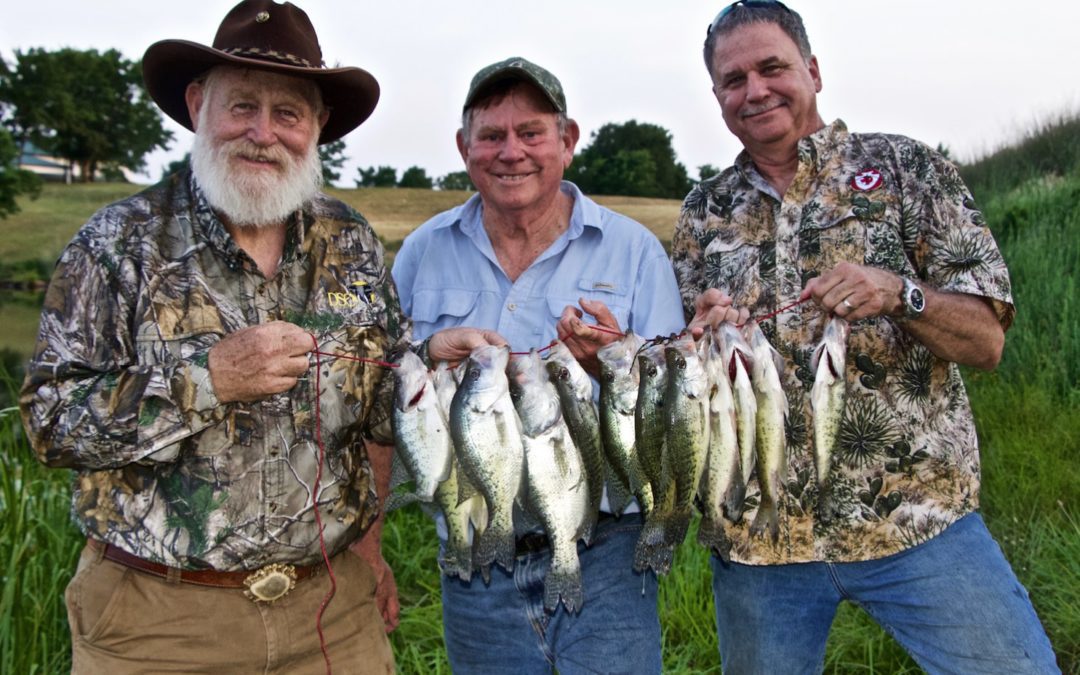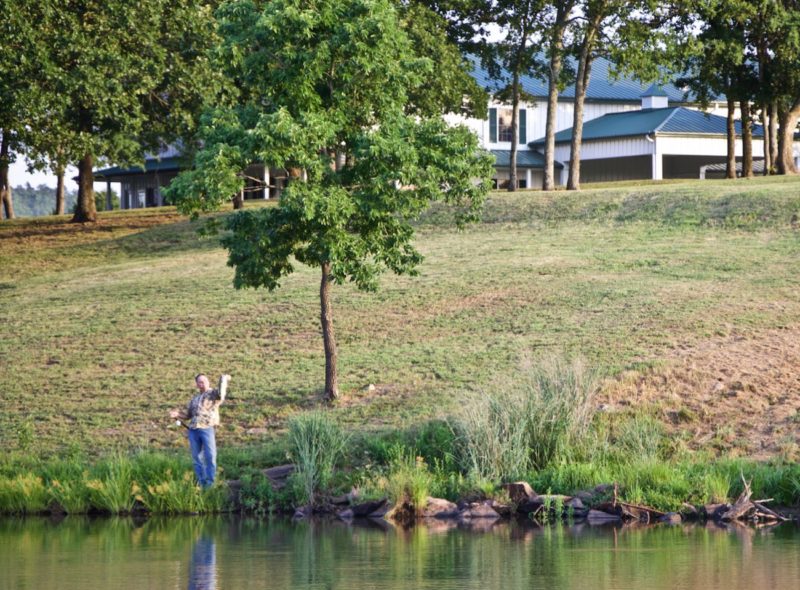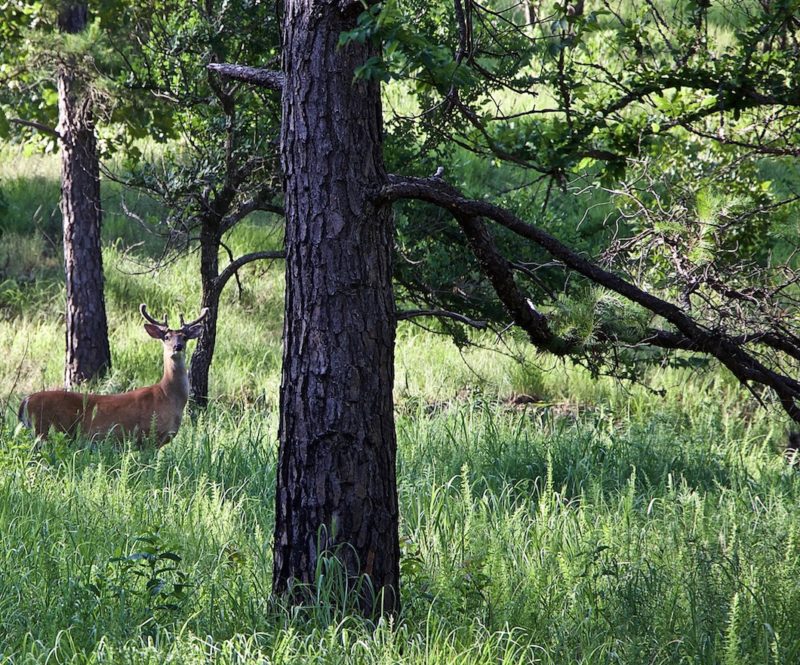Travis Benes is the hunting and fishing manager for the 44,000-acre Choctaw Hunting Lodge. He assured me there were several lakes on the property and the fishing was really good right now for crappie.
“If you catch the number of fish I think you will,” he said, “we’ll fry a mess for supper one evening while you’re at the lodge.”
Over the years I have often visited potential hunting properties during summer months under the guise of doing some fishing. But frankly, the primary reason for the the fishing trip was to spend time with the people involved in the hunting operation, and to learn as much as possible about the local habitat and deer population.
Friends Phil Zimmerman, Jeff Rice and Luke Clayton, with whom I do a weekly radio segment on “Luke Clayton Outdoors,” (www.catfishradio.org) and I intended to take full advantage of one of Choctaw Hunting Lodge’s (www.choctawhuntinglodge.com) fishing packages. That included staying in their extremely comfortable lodge, meals included. They also offer an option in which you and your group can stay in a fully outfitted three-bedroom house, but you do your own cooking. We chose the former option. I wanted to spend as much time as I could visiting with Travis and learning about their whitetail hunting operation, and oh yeah, fishing.
Upon our arrival a little earlier in the day, Travis Benes and Jody Standifer met us at the Lodge, which is owned by the Choctaw Nation and located a few miles east of Hugo, Oklahoma. Jody Standifer is in charge of the “company’s” properties. No sooner had we shaken hands than I felt like I was in the presence of long-time friends.
Before heading out, Travis explained the property had seen very limited hunting pressure under its previous ownership. Therefore, whitetail deer, Eastern turkey and wild hog populations flourished and were in extremely good shape when the 44,000 contiguous acres were purchased.
Under the Choctaw Nation ownership, there had been very limited hunting as well. Their commercial hunting operation had been initiated in 2017 for whitetail deer, turkeys and wild hogs. The property is now under a management program established and maintained by a professional wildlife biologist.
“During the 2017 hunting season we took only fifteen mature bucks,” Travis told me. “Their racks averaged over 150 B&C points. We also took some obvious management bucks. These were taken by wounded warriors. A number of does were also taken to keep our buck-to-doe ratio narrowed and the overall population within the capabilities of the habitat.”
“We have extremely good native wildlife habitat,” Travis explained. “It reminds me of the mountainous country I used to hunt out west for elk. We have a great abundance and variety of native browse. But, we also do limited supplemental feeding to insure the deer never experience a ‘hungry day.’ This fall, we will be planting numerous food plots with Tecomate Seeds. We want to give the native deer living on the property every nutritional advantage. To insure quality native browse and forage, we have pulled all livestock off of the property. We’re also fortunate to have really good neighbors who are on the same wildlife management program as ours.”
“Fishing should be good later this afternoon,” Travis assured me. “How about we get in the buggy and look at some of the hunting property. I know you want to catch some crappie, but I also know you really want to see some of the hunting area.” Travis was again reading my mind.
For the next three hours we covered a small portion of the 44,000 acres, which I soon realized included some of the finest deer habitat I have ever seen as a hunter/professional wildlife biologist.
We did see several bucks during our excursion. The largest had ten points showing (this during the second week of June), with mass that reminded me of Canadian whitetails. And those antlers were still a long way from being fully developed! I found myself wishing my life away, wanting to see what those bucks would look like in November when I would be returning for my deer hunt.
“We have some of the finest wild hog hunting available anywhere,” added Travis. “Truly economical hunts since we are looking for some help in reducing the population. Hog hunters too, can add fishing to the hog hunting packages.”
Upon seeing all the hog sign, I told Travis, “I want to come back in August to hunt hogs and catch a fish. And by then, antlers should be completely developed.” That night back at camp I set up dates for a hog hunt.
“Before heading back to the lodge to fish, Travis suggested we take a drive through the thousand-acre high fence pasture that holds introduced whitetails.
“The whitetails on the rest of the 43,000 acres are all free-range,” Travis stated. “Native deer – no introduced genetics. The native deer can only be hunted during the regular Oklahoma hunting seasons. The deer inside the high fence can be hunted any time, and, bag limits do not apply. If someone is interested in an extremely large-racked whitetail hunted outside Oklahoma’s hunting seasons, in velvet or rubbed out, we can accommodate.”
We did see two bucks inside the enclosure, with antlers that could easily score 200 once they’re completely developed. And, we only covered a very small part of the enclosure.
Back at camp we set up several crappie rigs and headed to the lake just below the lodge. In less than thirty minutes we had caught a stringer full of “slab-sides,” – better than a pound each – white crappie. Supper, that night was a feast to say the least!
I left my perfect Choctaw Hunting Lodge summer scouting trip with a deep desire to return in August for a wild hog hunt. Then I’m definitely coming back in November for some whitetail hunting!



